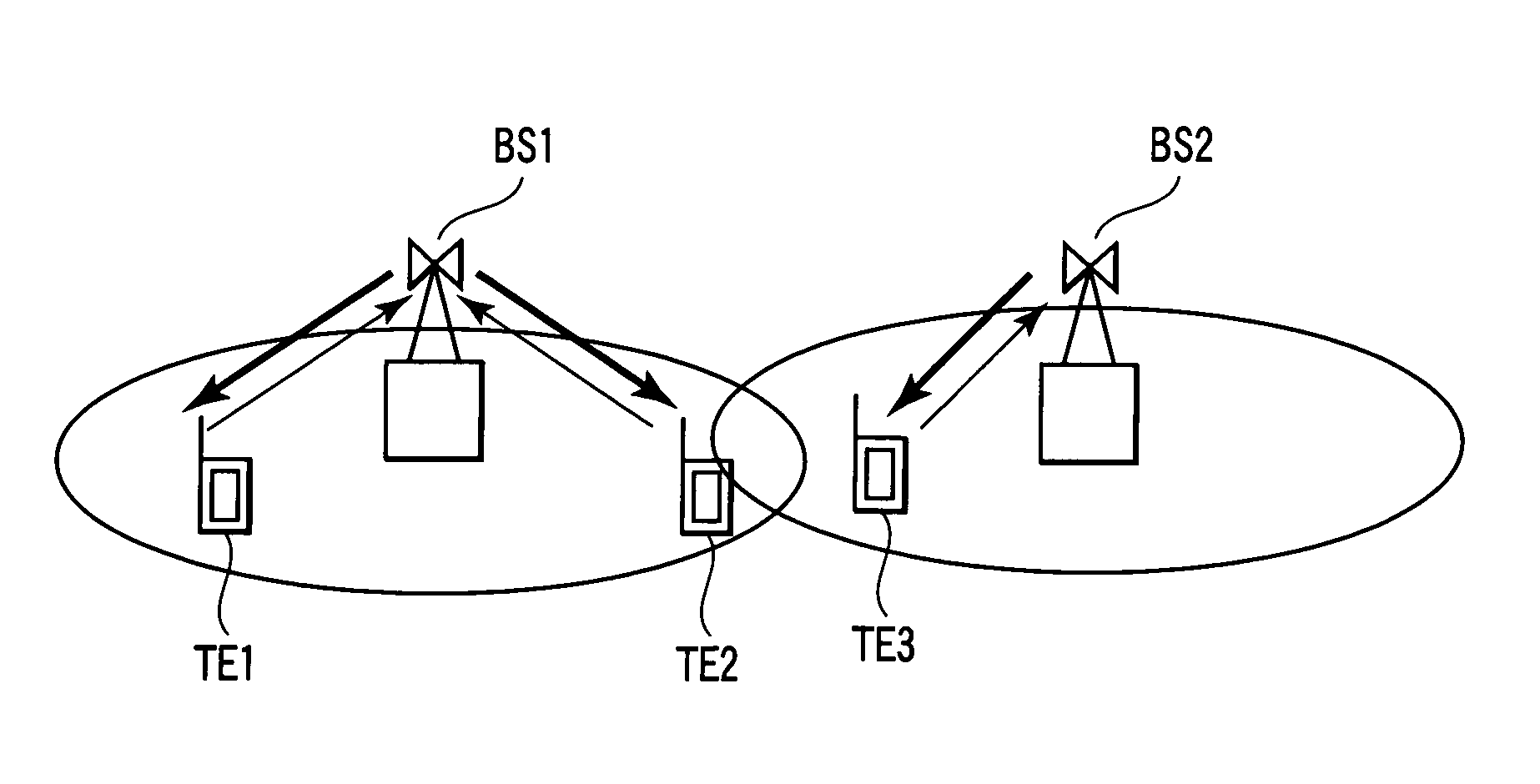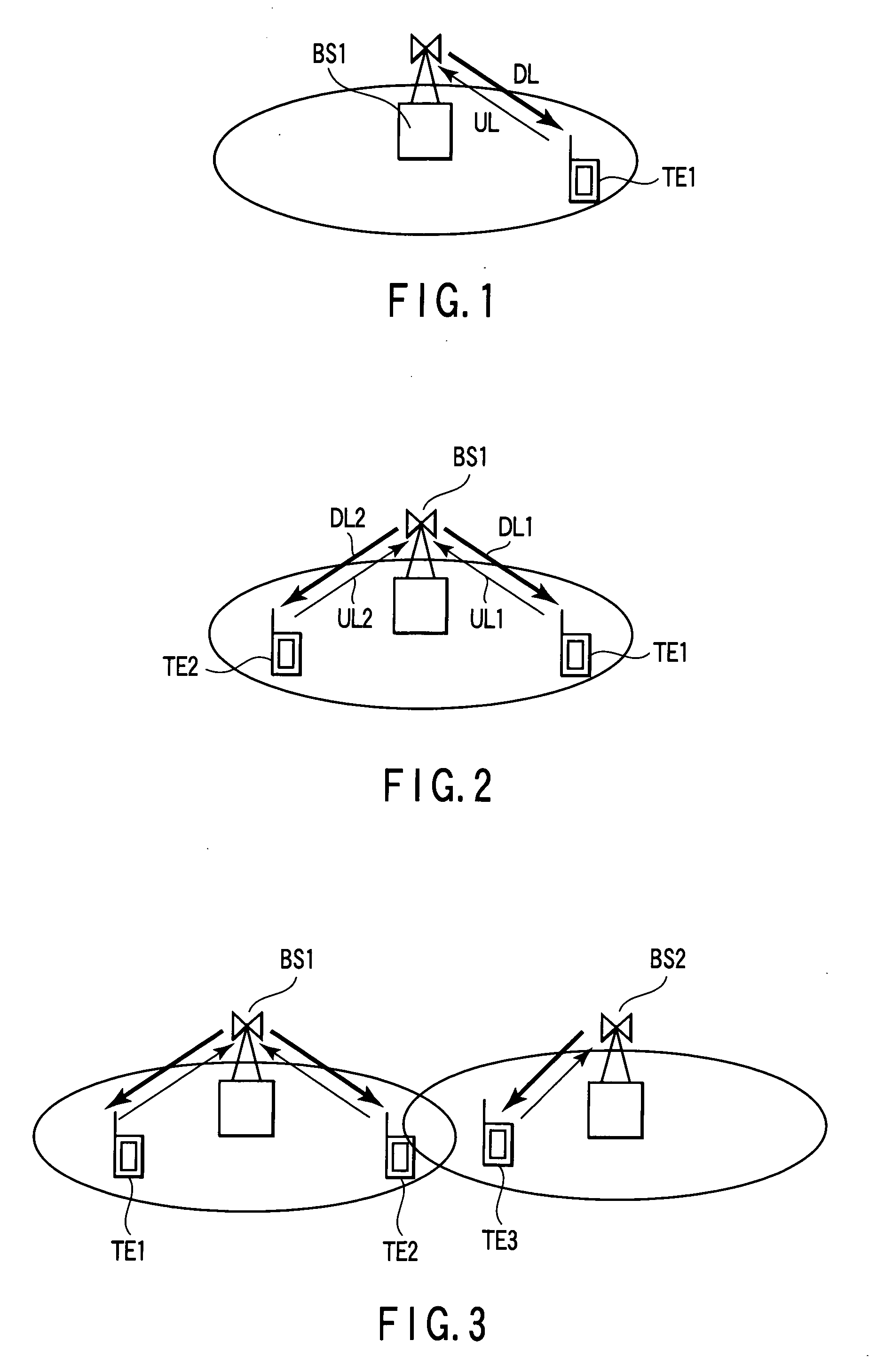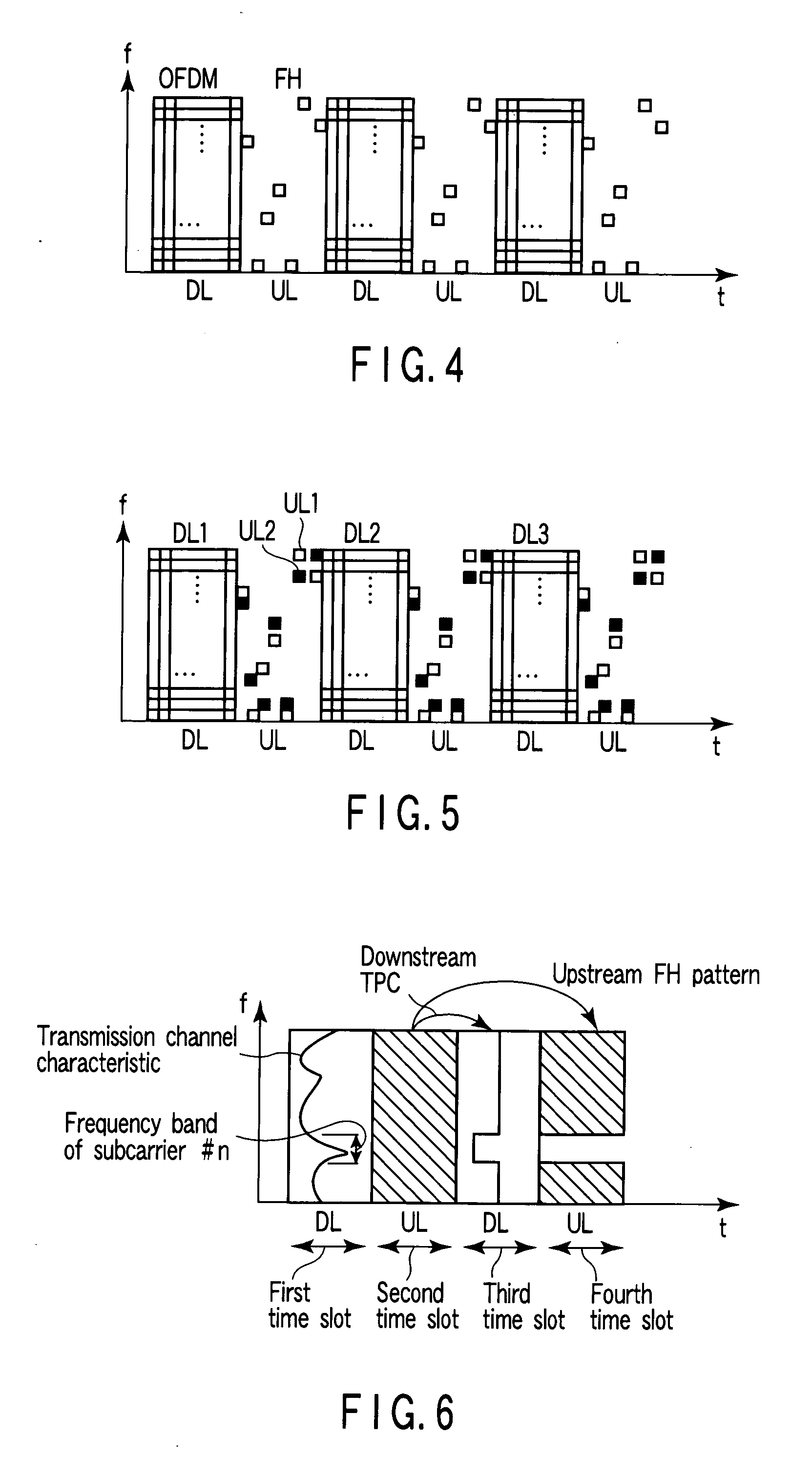Radio communication system, terminal apparatus and base station apparatus
a technology of radio communication system and terminal, applied in the direction of multiplex communication, orthogonal multiplex, wireless commuication services, etc., can solve the problems of large power consumption of the terminal, inability to accurately estimate the characteristics of the transmission channel, and inability to meet the needs of large power consumption
- Summary
- Abstract
- Description
- Claims
- Application Information
AI Technical Summary
Benefits of technology
Problems solved by technology
Method used
Image
Examples
first embodiment
(First Embodiment)
[0087] The arrangements of a base station and terminal which can be applied to the radio communication system that performs two-way communications, i.e., a downstream OFDM communication and upstream FH communication, will be described first.
(Arrangement of Base Station)
[0088]FIG. 18 shows an example of the arrangement of the base station.
[0089] Data to be transmitted from the base station to respective users #1 to #N are sorted by a user assignment unit 1 using FH pattern information output from an UL FH user assignment unit 8 and user assignment information output from a DL OFDM user assignment unit 7. The sorted signals (divided into subcarriers) addressed to respective users are modulated by an OFDM transmitter unit 2, as shown in FIG. 58. That is, in the OFDM transmitter unit 2, a subcarrier modulator 2a modulates subcarrier signals, and an IFFT unit 2b generates a multi-carrier signal by IFFT (inverse Fourier transformation). A guard interval appending uni...
second embodiment
(Second Embodiment)
[0174] A schematic arrangement of a whole radio communication system according to the second embodiment will be described below with reference to FIG. 2. A base station BS1 transmits downstream OFDM signals DL1 and DL2 to terminals TE1 and TE2 for a predetermined period of time. Upon completion of transmission of the downstream OFDM signals by the base station, the terminals TE1 and TE2 transmit upstream FH signals UL1 and UL2 using the same frequency bands as the downstream OFDM signals to the base station BS1. In this way, the downstream OFDM signals and upstream FH signals are temporally multiplexed.
[0175] The base station BS1 transmits a time synchronization signal, paging signal (a signal that notifies each terminal of incoming call), and the like using the frequency bands other than those which are used by the downstream OFDM signals and upstream FH signals.
[0176]FIG. 20 shows a slot format example. The base station BS1 transmits data using OFDM to respect...
third embodiment
(Third Embodiment)
[0188] A schematic arrangement of a whole radio communication system according to the third embodiment is the same as that in the second embodiment.
[0189]FIG. 23 shows a slot format example of the radio communication system according to the third embodiment. A base station BS1 transmits data using OFDM to respective terminals using a frequency-time region 201 (subcarriers #1 to #12 and times “1” to “4”). After a guard time 202 elapses upon completion of transmission of the downstream OFDM signal by the base station BS1, each terminal transmits an FH signal using a hopping pattern which is determined in advance with the base station within the range of a frequency-time region 203 (subcarriers #1 to #12 and times “6” to “11”). Note that a hopping pattern that is distributed across all the frequencies (subcarriers #1 to #12) is preferably used in one up slot.
[0190] After a guard time 204 elapses upon completion of transmission of the upstream FH signal by each termi...
PUM
 Login to View More
Login to View More Abstract
Description
Claims
Application Information
 Login to View More
Login to View More - R&D
- Intellectual Property
- Life Sciences
- Materials
- Tech Scout
- Unparalleled Data Quality
- Higher Quality Content
- 60% Fewer Hallucinations
Browse by: Latest US Patents, China's latest patents, Technical Efficacy Thesaurus, Application Domain, Technology Topic, Popular Technical Reports.
© 2025 PatSnap. All rights reserved.Legal|Privacy policy|Modern Slavery Act Transparency Statement|Sitemap|About US| Contact US: help@patsnap.com



